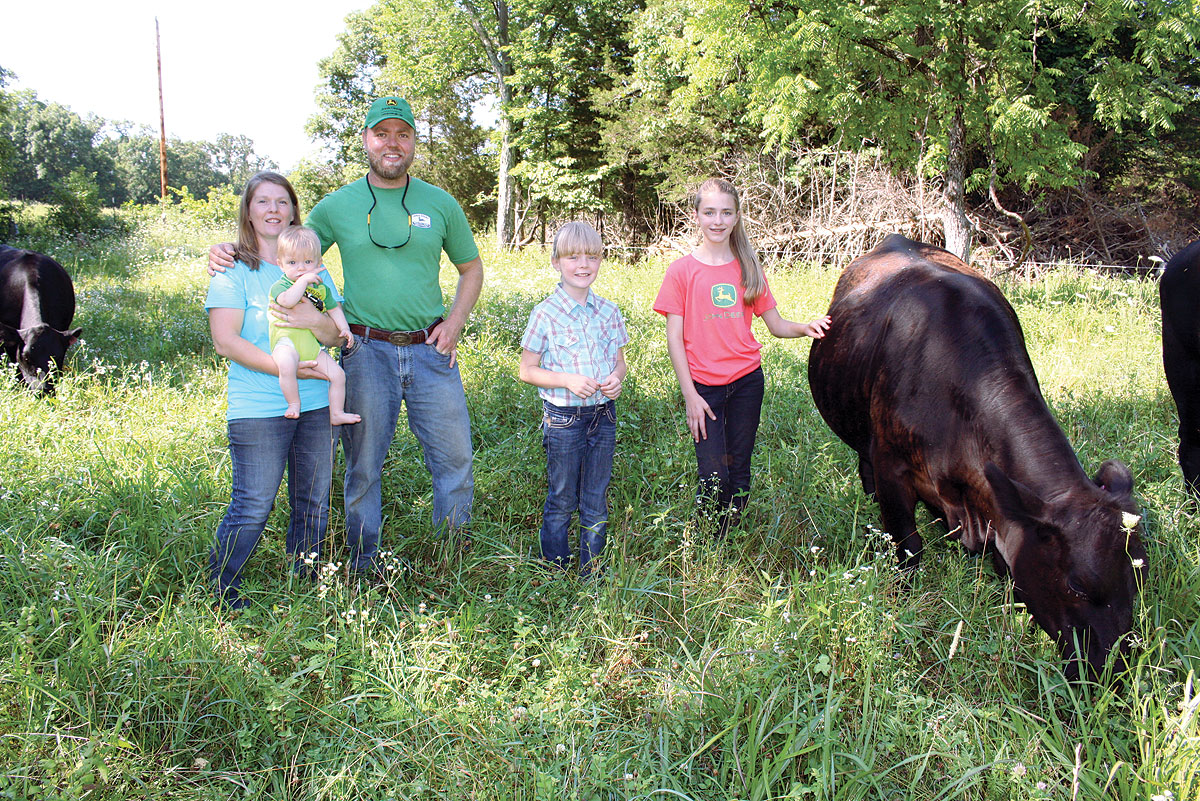
David and Carol Gaines began with only a few ewes, but their operation continues to grow
David and Carol Gaines started raising sheep five years ago with 12 ewes. They have a commercial flock of Katahdian and St. Croix crossed hair sheep which don’t have to be sheared or tails docked.
“They are very hardy,” Carol said.
This year they are lambing 51 ewes, of which 37 have their babies. They have more than 80 lambs on the ground now and will have 14 more first-time ewes lambing within the next couple of weeks. They lambed those 80 lambs in 15 days in February with snow blowing and freezing temperatures.
“As far as lambing, twins are common, but we’ve have had 14 sets of triplets this year which is a record for us,” Carol said. “Some people will pull the third one off and raise it on a bottle, but our mommas raise all three, although I do keep watch on them.”
During the lambing season, they keep the ewes on dry lot where barns are available for the lambing, which was a blessing in the terrible cold season they just went through. However, in the summertime, they have five lots, each with 1 to 2 acres, and they rotate the sheep through the lots and move them every two weeks.
“This has helped with the parasite problem. We also use breeding to control parasites which can be a problem if not watched. We worm everything once a year and, in the fall, we worm those that seem to be having a problem,” Carol said. “We also use purebred rams.” The couple now uses Katahdian rams, but did incorporate St. Croix rams for their parasite resistance.
They feel hoof care is very important and trim hooves twice a year.
A special feed is used that is mostly corn and oats and can be fed to everything, Carol explained.
“Once the lambs start eating at about two weeks, I creep feed them with the same feed only I add a lamb supplement to help with health and growth. The ewes are fed once a day, except when they have lambs and then I up it to twice a day.”
The Gaines try to sell as many sheep off the farm as they can and this is usually the ewe lambs which people buy to either start a flock or add to what they have. Some of the ram lambs are sold off the farm for meat, but most of them will go to the local sale barn when they reach 60 to 80 pounds. This can take three to five months, depending on their size at birth and how well they grow out.
David and Carol live on a farm near Liberal, Mo. She is a retired postmaster at Sheldon, Mo., and David retired from 3M at Nevada, Mo. Their son, Josh, is a rural mail carrier in Arma, Kan., but he helps with the lambing season.
“It’s a family project,” Carol said.
As if Carol and her family doesn’t have enough to do, she is a volunteer with the T & D Donkey Rescue which is located outside of Liberal.
“I enjoy helping there when things are quieter around here,” Carol said.






